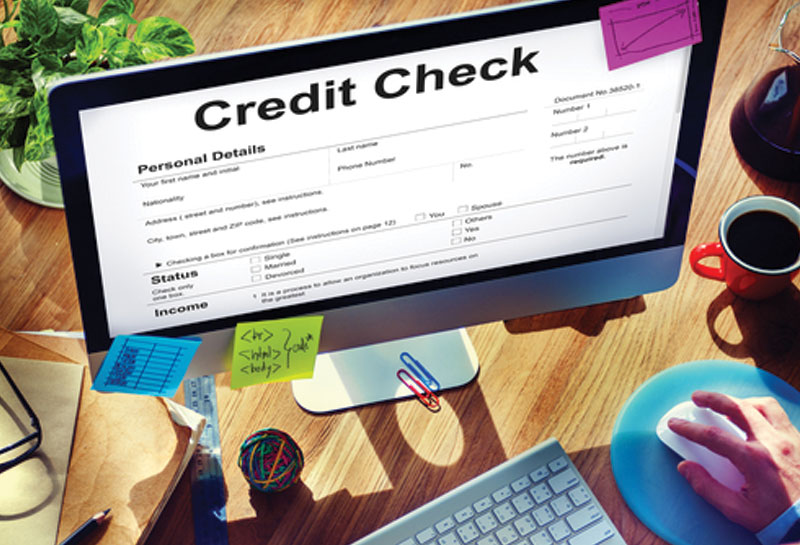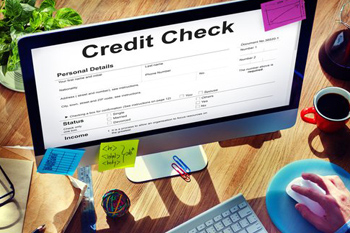Shopping Online Vs. In-Person
With the advent and spread of smartphone technology, entrusting your money to an online bank has become an increasingly popular alternative to the traditional experience. Traditional banks, however, still offer several distinct advantages that the online experience cannot provide, including in-person customer service when you have questions or concerns.
How do you decide which type of bank to use? Here are a few things to consider about your transactions.
Getting cash
If you use cash on a regular basis, make sure to consider the locations and accessibility of in-network ATMs before choosing your bank. Choosing a local bank or credit union means you should have good access to multiple ATMs, and many banks will reimburse you for fees incurred by using other ATMs.
Online banks don’t typically have ATMs of their own, which means you are more likely to pay a fee to withdraw your cash. These fees usually run a few dollars per withdrawal, but can often be frustrating since you are paying to take out your own money. This isn’t always the case, though. According to Business Insider’s Megan Durisin, some online banks will provide you with compensation for your fees. However, there is usually a cap on how much they will reimburse you per month.
Making deposits
When choosing your bank, you also want to consider how you will deposit money into your account. While both online and traditional banks usually allow direct deposits from your employer, online banks have several restrictions when it comes to other deposits.
At a traditional bank, you can deposit cash, checks, money orders and more. Simply walk into your bank and speak with a representative about your deposit. If you make a significant number of deposits, especially with checks or cash, traditional banking is a convenient option.
With online banking, your deposit options are a bit limited. Depending on your bank, you might be able to digitally deposit a check, but there are usually limitations on how much you can digitally deposit in one day. If your check exceeds that limit, you’ll have to mail it in. To deposit cash to an online bank account, you may have to purchase a money order and mail that in, as well. “You might have to pay a small fee for the money order,” explains Spencer Tierney, a contributor at NerdWallet. “For amounts larger than $1,000, you may have to spring for a cashier’s check at a bank.”
Customer service
Many online banks provide great customer service, including online live chats and call centers. But for some, speaking face to face is an important part of creating a trusting relationship with your financial institution, and it is a service that Durisin notes can only be offered by a traditional brick-and-mortar bank.
Choosing your bank is a personal decision that should be based on services that are most important to you and your lifestyle. Speak with a representative at either a traditional or an online bank to learn more.
How Community College Can Save You Money
Financial benefits of taking classes or earning a degree at a community college
To college hopefuls, the financial burden it represents can be daunting. However, community colleges offer multiple money-saving opportunities while still allowing you to earn an education.
- Tuition savings
Tuition is perhaps the most immediate money-saving benefit of applying to a community college rather than a larger four-year university. Hocking College lists the average cost of tuition and fees at a four-year university as follows: One year at a private school runs an average of $33,480, and one year for in-state residents at public schools runs an average of $9,650. Comparatively, community college costs an average of $4,900 per year for public institutions and $15,478 per year for private institutions. Hocking College notes that community colleges only require two years of schooling while traditional colleges require four. As such, the price difference becomes far more pronounced when multiplied.
- Room and board savings
Another source of savings, as pointed out by The Princeton Review, is room and board. Because there is a community college located within 90 percent of U.S. residents’ commuting distances, this allows students to continue to live at home while they complete their degrees.
- Job savings
Community college students often take classes part-time while keeping their job. This allows the chance to save up money or pay for classes going forward. Hocking College says that this could be an especially good choice for nontraditional students, such as parents or older students, who simply don’t have the ability to take full-time classes.
Even if the student is not of a nontraditional group, community college degrees are only two-year degrees. This means that students can go into the workforce in half the time it would take attending a four-year school, giving them a head start in the workforce.
- The 2+2 plan
Community college can also help students whose ultimate goal is to complete a bachelor’s degree at a four-year institution. The method for doing so is often referred to as the “2+2 plan.”
The plan involves taking advantage of the above sources of savings for two years at a community college before transferring the credits to a larger university to complete a degree. According to U.S. News, many community colleges offer agreements that ensure student credits will transfer to certain four-year schools. It described the situation in Massachusetts, where community college graduates with a GPA of at least 2.5 can transfer all credits, guaranteed, to any state university by using the Joint Admissions or MassTransfer programs.
In theory, this academic plan could result in a significant savings when pursuing a bachelor’s degree. However, both U.S. News and Dr. Robert Ronstadt, a former vice president of Boston University writing for Forbes, offer warnings about the 2+2 plan.
U.S. News says that not all four-year institutions accept credits from all community colleges, so students should speak to advisors at both schools to make sure that transfer credits are accepted, and under what circumstances they are accepted.
Dr. Ronstadt says that the 2+2 plan can also lead to trouble if it isn’t completed properly. The problem, he says, is that to achieve the savings promised by the 2+2 plan, students absolutely must graduate in the implied four years. If classes at the larger university prove to be difficult or not enough credits transfer, causing the student to take 3 or 4 years at the second school, the savings from the two years in a community college are swiftly consumed. In addition, to successfully complete the 2+2 plan the student needs to be a full-time student at the community college, which could put an overwhelming burden on students who need to work to pay expenses, potentially causing schoolwork to suffer and jeopardizing the transfer to the four-year school.
Overall, community college can definitely save students money due to lower cost of tuition, convenience of location and the option to work while taking classes. Whether the student then uses these boosts to transfer to a bachelor’s program at a four-year school or to graduate and enter the workforce is up to them.
4 Ways to Start Investing in Your 30’s
If you’re in your 30s, now is the time to prioritize investment
Your 30s are a time of transition. While you are no longer in the beginning years of adulthood, retirement is still far away. Investing may seem like less of priority than starting a family, purchasing a home or paying off student loans.
While these are important goals, your 30s are a crucial decade for investing. According to finance writer Paula Pant in an article for The Balance, if you begin saving for retirement at age 30, you will need to save at least 15 percent of your income to retire at age 65.
Whether you’ve already prioritized investing or need a place to begin, these are some options to help you build wealth and save for retirement.
- Focus on your 401(k)
If your employer offers a 401(k), maxing it out is one of the most important investing steps you can take in your 30s. According to the IRS, the maximum you can contribute in 2018 is $18,500. Your contributions are taken from your paycheck before taxes and are not taxed until you make withdrawals for retirement. “Perhaps best of all, many employers will match your contributions, at least up to a cap,” finance writer Arielle O’Shea notes in a February 2017 article for NerdWallet. “That’s free money you won’t find through other offerings.” If you’re unable to contribute the maximum amount to your 401(k), taking full advantage of your employer’s match is a good place to start.
- Consider a Roth IRA
If you’ve maxed out your 401(k), or if you don’t have access to one, consider opening a Roth IRA. According to O’Shea, Roth IRA contributions “go in after tax, which means no tax in retirement. Your money also grows tax-free in a Roth IRA.” For 2018, the IRS says you can contribute $5,500 to a Roth IRA unless your income is above $120,000.
- Other investment accounts
Beyond your 401(k) and Roth IRA contributions, investing in stocks is another avenue to consider. Picking individual stocks is one option, although successfully doing so requires a high level of research and expertise. Another option is an index fund. According to finance writer Dayana Yochim in an August 2017 article for NerdWallet, “When investors buy an index fund, they get a well-rounded selection of many stocks in one package without having to purchase each individually. And because these funds simply hold all the investments in a given index … management fees tend to be low. The result: Higher investment returns for individual investors.”
- Investment risk
Any investment involves risk. However, O’Shea writes, “Risk is one reason there’s such emphasis on investing when you’re young—young people have a long time horizon before retirement, which means they can worry less about short-term volatility. That allows them to accept risks that should lead to higher average returns over the long term.” For example, stocks offer a higher return on investment, but they are also riskier. Bonds and mutual funds carry less risk but a lower return rate. A more aggressive investment strategy for your 30s might emphasize a heavier allocation of stocks with a smaller percentage of bonds. Then, as you get older, you can slowly shift your investments to focus on safer holdings.
While in your 30s, it is important to prioritize investing in retirement, especially if you’re only just getting started. Whether that’s the case or you’re building on what you’ve invested, the additional effort will help put you on the path to peace of mind and a secure retirement.
How to Remove Credit Report Errors

What do you do when you spot an innacuracy on your credit report? Take steps to dispute it. Because of the Fair Credit Reporting Act, cleaning up your own credit report is usually quick and easy. Credit reporting agencies (often called credit bureaus) should only report accurate and current information.
Step one – Obtain your credit reports
To know exactly what is happening with your credit, check the reports from all the major credit bureaus – TransUnion, Equifax, and Experian. The information on each report may vary because not all creditors report to every bureau. You may receive a free report from each company once per year from Annual Credit Report Request Service, or you may obtain them from the bureaus directly for a fee.
Step two – Know what can be removed
You can’t rid every negative notation from your file – credit bureaus are obligated to report all credit and debt information as long as it is correct and timely. So what can be removed?
- Wrong information. If the report lists incorrect information, such as an account you never opened, someone else’s name, or a judgment for a lawsuit you were never a part of, you can have it permanently purged from your record.
- Duplicate information. While an account can sometimes show up multiple times, you may want to have your report list it just once. This can prevent lenders from believing you have more debt or credit problems than you actually do.
- Old, negative information. In most cases, negative information, even when accurate, won’t haunt you forever. Your credit report may reflect lawsuits, judgments, liens, foreclosures, a Chapter 13 bankruptcy (from the filing date), late payments, and charged-off accounts for seven years. Chapter 7 bankruptcy will be evident for ten years from the date of filing. Child support arrearage and default notations for student loans, though, can be reported until satisfied.
Step three – Dispute inaccuracies
If you do spot errors or items that should have aged off your report, it is time to take action:
- File the dispute with the bureau. You may make your dispute on the company’s website, over the phone, or by mail. In all cases you’ll have to provide your personal identification and a description of what is wrong, and what the correct information is. If you have any documents that support your case (such as copies of cashed checks that confirm you paid an account), include those as well.
- Wait 30 days. After you file your dispute, the bureau has 30 days to investigate the matter, and a dispute notation will show up on your report. The creditor will have this time to verify the information, and if they can’t prove it’s accurate, the bureau will stop reporting it. When the bureau completes the investigation they will send you a written report covering what they found, and an updated copy of your credit report if it resulted in any change.
In the majority of cases, removing inaccuracies is that simple. However, if the investigation results in no change, contact the creditor by phone and/or mail and explain why the information is incorrect and that you want them to report the accurate information. Include copies of supporting documents (a statement showing a zero balance, for example), if you have them. The creditor may not continue to report unproven information.
Finally, if the situation still doesn’t get resolved to your satisfaction (or if the negative information is correct but you have a good reason for why it happened), consider writing a letter of explanation to add to your report. In one hundred words or less, you can explain your side of a credit problem. Write the note clearly, include supportive facts, and send it to the bureaus to be attached to your report. This “100-word statement” could make a positive difference to whoever is reading the report.
5 Ways to Cut Your Monthly Expenses

Ever notice how your monthly expenses always seem to equal whatever salary you’re making, even after you get raises? The phenomenon is called “lifestyle creep” and it can keep you from reaching all kinds of financial goals, from paying down debt, to saving for retirement. One way to get lifestyle creep under control is to have any future raises you get direct deposited into savings – like a 401(k) account through your employer, or an Individual Retirement Account (IRA). But here are five things you can do right now to cut your monthly expenses.
- Make a Budget
The first step toward cutting expenses is to make a budget, so you know exactly where your money is going. Start with major categories, like rent or mortgage, utilities, transportation, meals, clothing, and entertainment. Then break it down even further to ferret out items that are ripe for reducing. Many people, for example, are surprised to learn just how much they pay for pricey lattes and snacks from restaurants and vendors that would cost a fraction of that amount if they were made at home or purchased at a grocery store. - Lower Your Mortgage Payment
The biggest monthly expense for many people is their home mortgage. If you haven’t examined that loan since you bought your home years ago, it’s quite possible that you could save a lot of money – both now and over the life the loan – if you refinance at a lower interest rate. To know whether refinancing makes sense, you’ll need to add what you’ll spend on closing costs into the calculation of your new monthly payment. - Get an Insurance Checkup
If you have a car, you absolutely must have car insurance. But it pays to shop around periodically to make sure you’re getting the best deal. If you have a decent emergency fund on hand in case of an accident, one way to lower your premiums is to increase your deductible. Also be sure to examine your policy for “extras” you may not need. For example, you could be paying for roadside assistance both through your insurance policy and through AAA. - Examine Your Auto-Payments
Putting your regular bills on auto-payment can be a really smart way to protect your credit rating by ensuring you’re never late with a payment. However, if auto-pay causes you to keep paying for items or services you don’t really need or use, it’s no bargain. A few common culprits include unused gym memberships, subscriptions to magazines that aren’t read, and cable or satellite TV plans that include loads of premium channels that are rarely watched. - Cut the Cord
If you’ve already ditched your land line, good for you! If not, doing so is one of the quickest and most pain-free ways to trim your expenses. Most all of us have our cell phones with us all the time anyway, and if you really like the feel of a traditional phone in your hand, a VOIP (Voice Over Internet Protocol) plan that provides phone service over the Internet is a lot cheaper than traditional land line service.
6 Confusing Things About Your Credit Report
If you’re not used to reading them, credit reports can make about as much sense as a restaurant menu printed in a foreign language. At least in a restaurant, you can point to what someone else is having. But if you don’t know how to read your credit file, you could make mistakes that could lead to your financial life being harder than it needs to be.
Here are some common misinterpretations people make about their credit reports and how to avoid them.
- They have too many student loans listed for me
When student loans are listed on credit reports, they are often broken up into individual loans for each semester you took out a loan. Of course, you still want to make sure all the loans are yours, but don’t be surprised if you see a lot of loans listed under the same provider. - I must be a victim of ID theft because someone else’s name is on my report
When companies like Equifax, Experian and TransUnion compile your information, they look to gather up all financial information that is being reported for you. In doing so, they may accidentally confuse you with someone with a similar name or other bit of identifying information. This can result in that person’s name, address, date of birth, Social Security number, etc. being mistakenly listed on your credit report. You can always have this kind of information removed from your credit report by disputing the information at the website of the bureau that is listing the information. You can access the website for the individual bureaus listed above by simply adding “.com” onto the name of the credit reporting agency. - I paid that collection account, it shouldn’t be on my report anymore
Collection agencies aren’t required to remove a collections account from your credit reports once you have paid it. All they are required to do is list that the account has been satisfied. Negative accounts like these stay on your credit report for seven years from when the account first went delinquent with the original creditor, whether they are paid or not. - My credit score is missing
The credit reports we are all entitled to by federal law – available at www.annualcreditreport.com or by calling 877.322.8228 – do not come with a credit score. There is currently no law that automatically provides everyone with a free score. FICO is the company that provides the score most commonly used by lenders. You can purchase a score from them at www.myfico.com. - My date of birth and address are part of lending decisions
When you access your credit reports, you will see that some of your personal information is listed in addition to your financial data. For example, the report may list where you live, when you were born, and who you have worked for recently, among other things. You needn’t be worried that this is being used against you when a potential lender is looking at your reports, though. It is illegal for a lender to use age or address when making lending decisions and these pieces of information are not calculated into your FICO credit score. - All these inquiries count against my score
When someone other than you looks at your credit report, it results in what is called an “inquiry” being put on your credit report. If you’ve ever looked at credit reports, you may know that there can be a whole lot of them listed at any one time. Keep in mind that the only inquiries that are ever factored into your credit score are ones that happened in the past year (even though they stay on your credit report for 2 years) and the ones that were for the purpose of you applying for credit or financing some other type of financial contract. The other types of inquiries are not counted against you.
5 Ways to Establish Credit

When it comes to getting a credit card, qualifying is actually one of the easiest parts of the process. Establishing a positive credit record, however, requires dedication and patience.
Whether you are new to credit or are trying to “clean up” past mistakes to reestablish a favorable record, you may encounter a frustrating paradox: you must have and use credit to create a credit history, yet many financial institutions are reluctant to extend credit to someone without an established record. But don’t despair – there are several good remedies for both situations.
A Secured Card
An excellent start is a secured credit card. You are granted a credit line based on a percentage of a cash deposit you make to your financial institution. Because deposits are usually low, so too will be your credit limit. Application and annual fees for secured cards are often higher then those associated with unsecured credit cards.
The Retailer’s Card
Consider a local retailer’s credit card. Their criteria is often less rigorous than larger credit issuers. Be sure they subscribe to the major credit reporting agencies though – if not, you won’t be establishing a credit history.
A Co-Signer
Another option is having someone with a positive credit record co-sign an account for you. This requires a great deal of trust on the part of the co-signer – if you fail to pay, he or she is responsible. You could end up jeopardizing a relationship as well as a credit record.
Review Your Credit Report
Finally, if you have damaged credit, you might need to rectify the past as you’re building your future. Paying old debts and correcting errors on your credit report as soon as possible might be the way to go.
Pay off Your Debts
Once you have a credit line, establish a good history by using it responsibly. Keep balances low, always pay on time, don’t pursue unnecessary credit, and stick with a few good credit instruments of various types.






